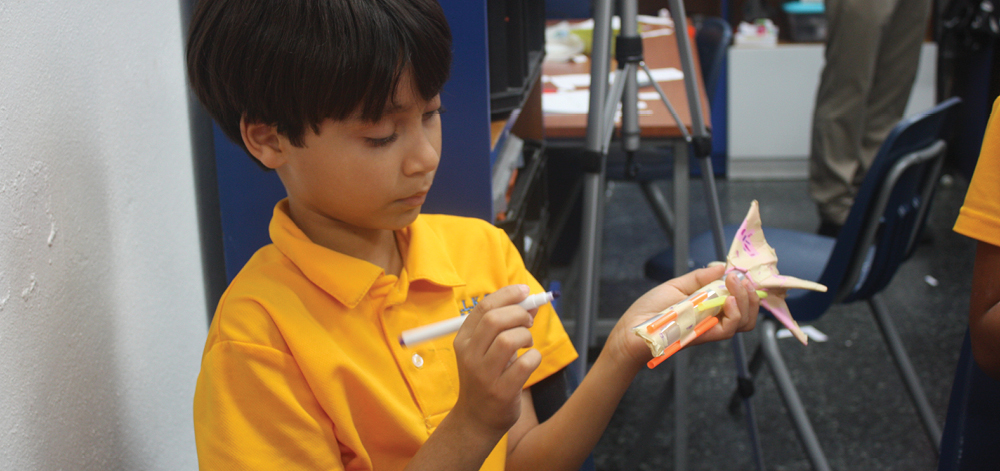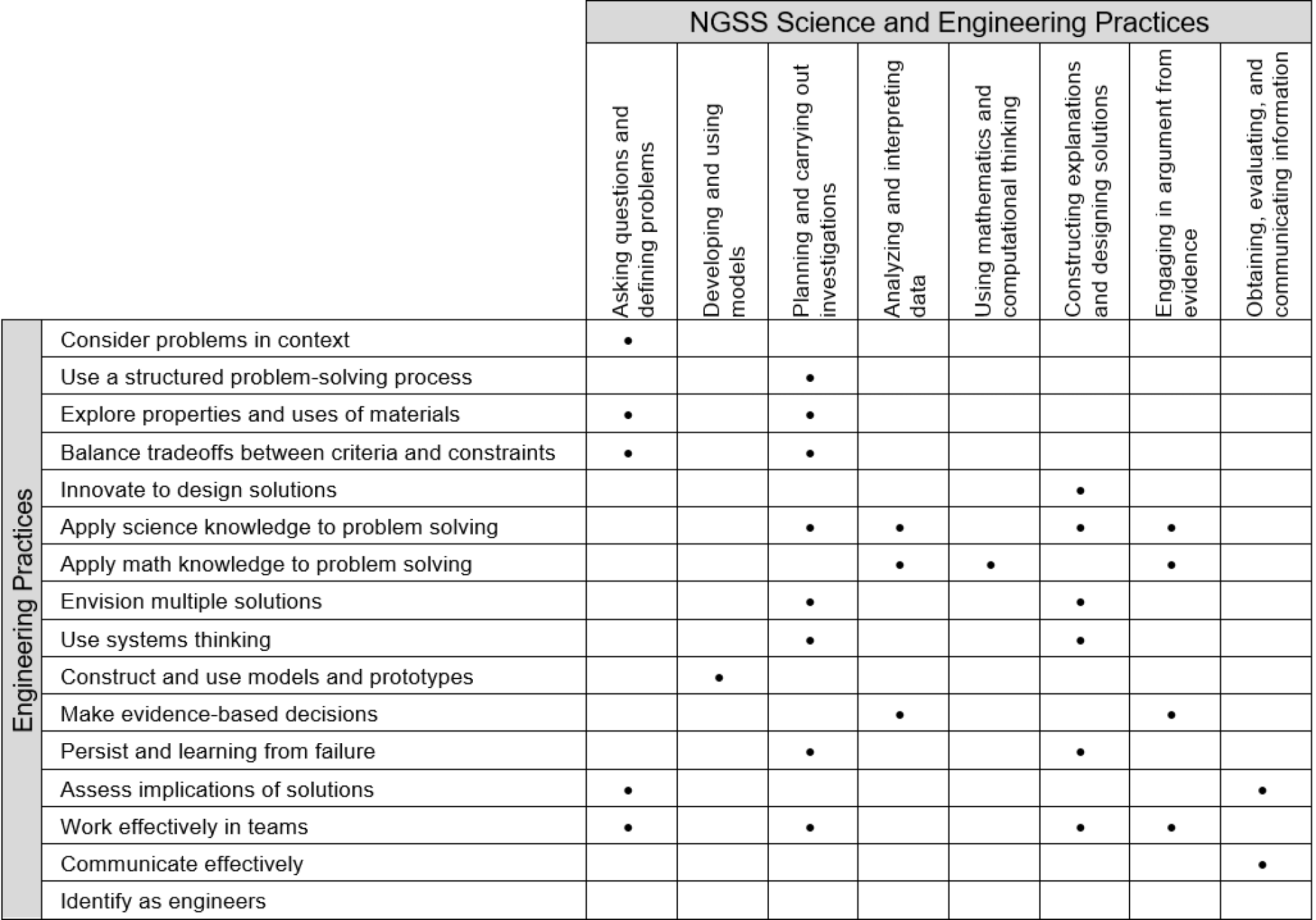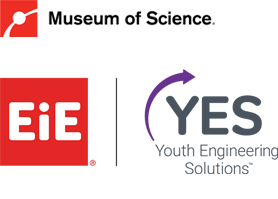
Engineering Practices
Engineering Practices
YES units engage students in engineering practices—patterned behaviors that lead to the creation of engineering knowledge and products. Research conducted by the YES team has identified 16 common engineering practices.
The Next Generation Science Standards (NGSS) identify 8 science and engineering practices. YES practices encompass these and describe more specific, engineering-focused behaviors.
| Practice | Description |
|---|---|
| Consider problems in context | Engineers must consider the users and relevant conditions when designing solutions. Engineers often design for clients who set parameters and express preferences. |
| Use a structured problem-solving process | Engineers use a structured, iterative process—an engineering design process—to solve problems. Named phases guide activity. This is not a rigid template; rather, engineers move back and forth among phases. |
| Explore properties and uses of materials | Engineers use many different materials to create technologies. The properties of each material determine its suitability for the design. Engineers may investigate how the attributes, cost, and aesthetics of a material affect its performance and possible uses. |
| Balance criteria and constraints | Engineers must meet the designated criteria for success and client preferences while staying within specified constraints. They need to make tradeoffs among parameters such as cost, performance, materials, time, ethics, and sustainability. |
| Innovate to design solutions | Engineers rely on their imagination, creativity, and ingenuity to generate novel solutions. |
| Apply science knowledge to problem solving | Engineers understand and apply science concepts as they make design decisions. Drawing on previous science knowledge or engaging in scientific investigations can strengthen engineering solutions. |
| Apply math knowledge to problem solving | Engineers use mathematics to analyze data and explore and express relationships among variables. |
| Envision multiple solutions | Engineers brainstorm, construct, and assess multiple solutions to a problem. They understand that a given problem can be solved in a number of ways and use criteria and constraints to select the optimal solution. |
| Use systems thinking | Engineers consider how parts interact within larger systems. They think about relationships and how choices for one part of the system may have consequences for the functioning of the whole. |
| Construct and use models and prototypes | Engineers use a variety of types of models such as sketches, physical renderings, computer representations, and equations to depict, examine, test, and evaluate one or more parts of the design. Data from models can inform the development of prototypes—fully functional versions of the intended product that can be tested further. |
| Make evidence-based decisions | Engineers collect and analyze data to inform their decision making throughout the engineering process. Observation, empirical data, scientific knowledge, and models are all types of evidence engineers may use. |
| Persist through and learn from failure | Engineers understand that failure plays a prominent role in engineering, providing opportunities for learning and improving designs. They persist through failure and recognize that solutions can always be improved. |
| Assess implications of solutions | Engineers have a responsibility to evaluate their solutions from multiple perspectives. They need to consider not only how well the product functions but also its social, environmental, and ethical impacts. |
| Work effectively in teams | Most engineers work in teams. Collaborating, communicating, critiquing, and negotiating with people who bring diverse expertise and experiences strengthen engineering thinking and solutions. |
| Communicate effectively | Engineers communicate ideas to their teammates, other engineers, their clients, and the public. They use various media (text, speech, graphics, models, and numbers) to explain their designs and processes. |
| Identify as engineers | Through engagement in authentic engineering practices, engineers develop identities as creative problem solvers. They use processes, tools, and standards for quality and ethics that align with the discipline of engineering. |
Read more about engineering practices:
Cunningham, C. M., & Kelly, G. K. (2017). Epistemic practices of engineering for education. Science Education. 101, 486–505. DOI: 10.1002/sce.21271
Next Generation Science Standards (NGSS) Practices
The NGSS identifies eight science and engineering practices. YES practices encompass these and provide more specific, engineering-focused behaviors. The table indicates how the NGSS and YES practices intersect.

Download the PDF.
